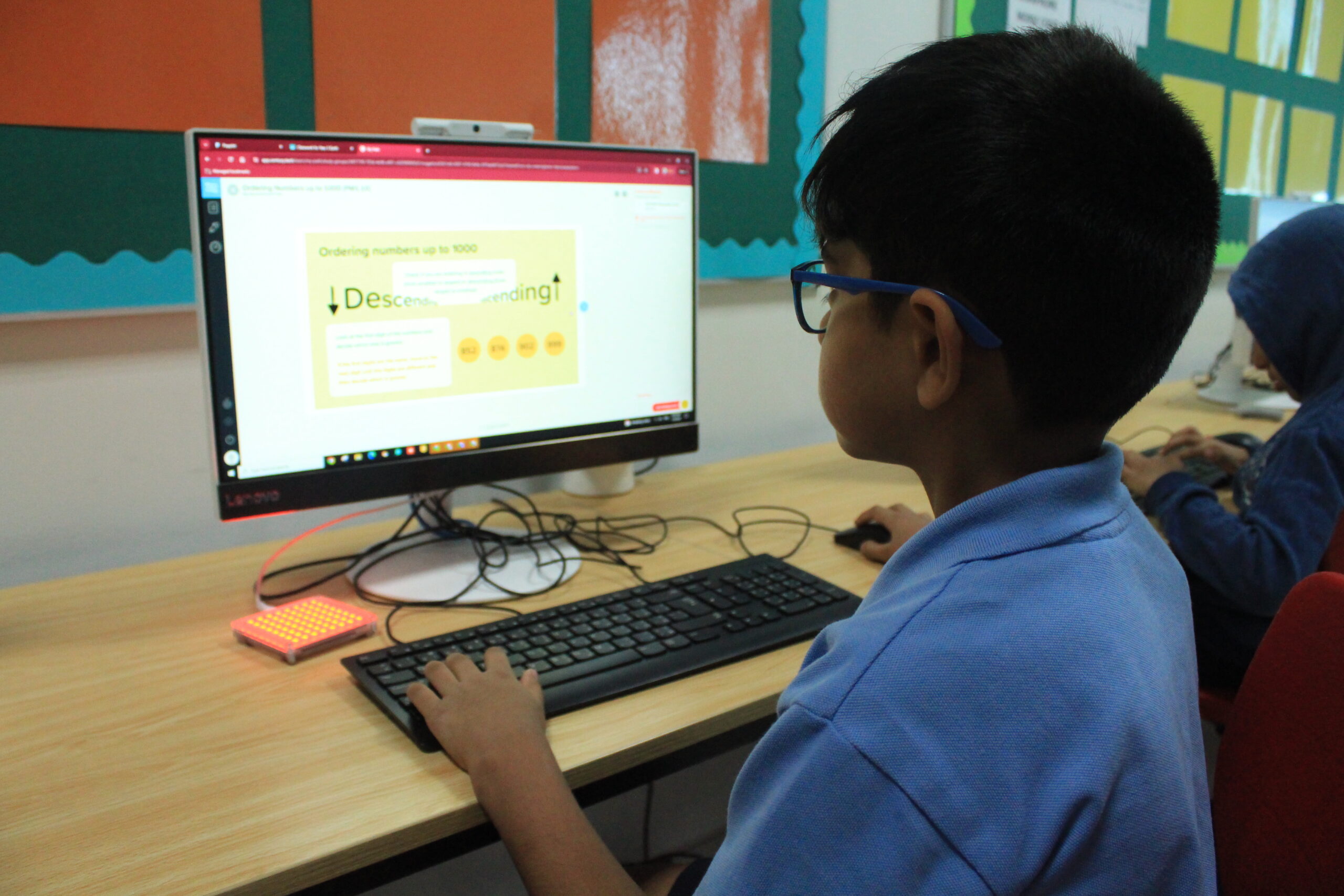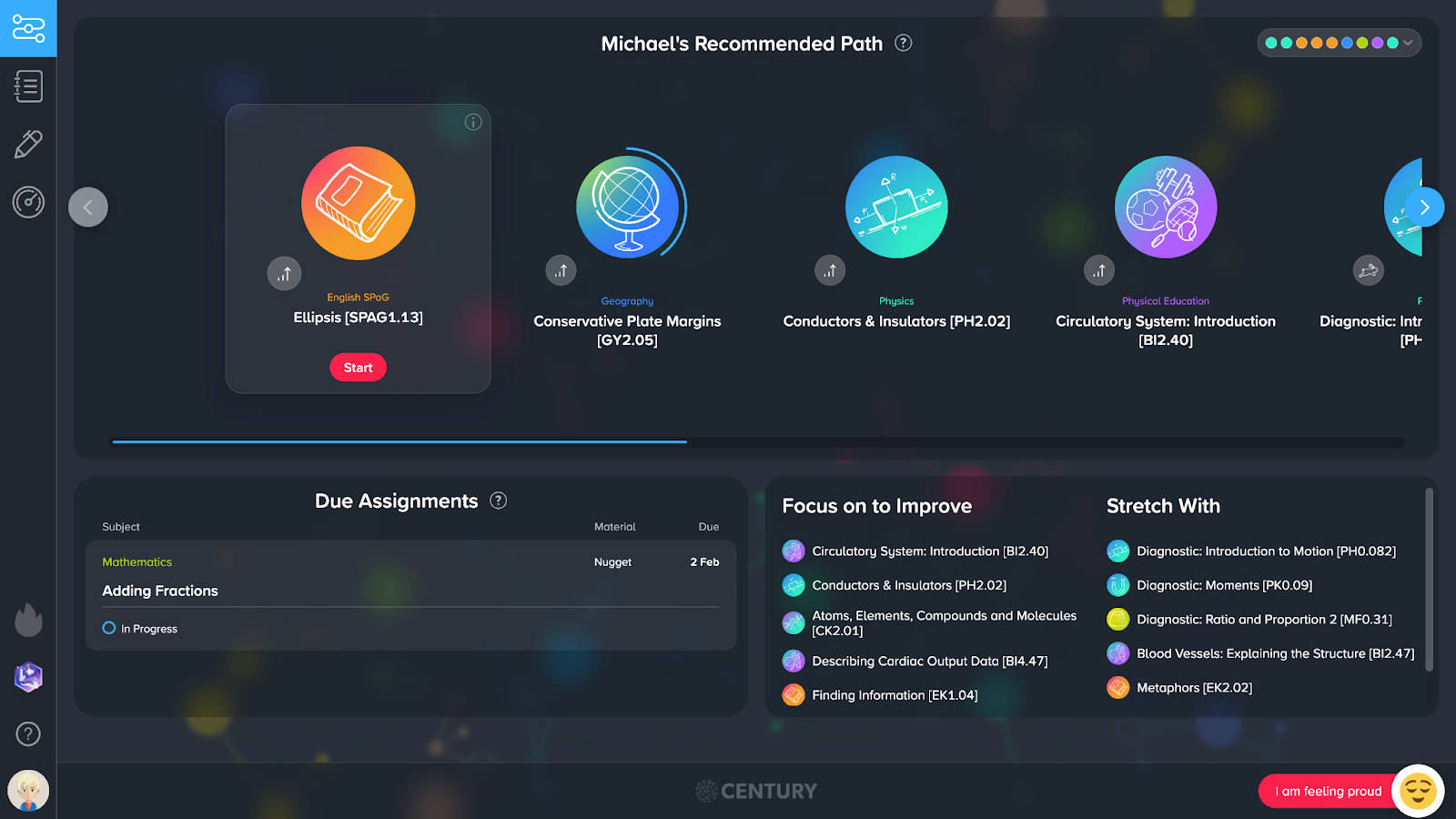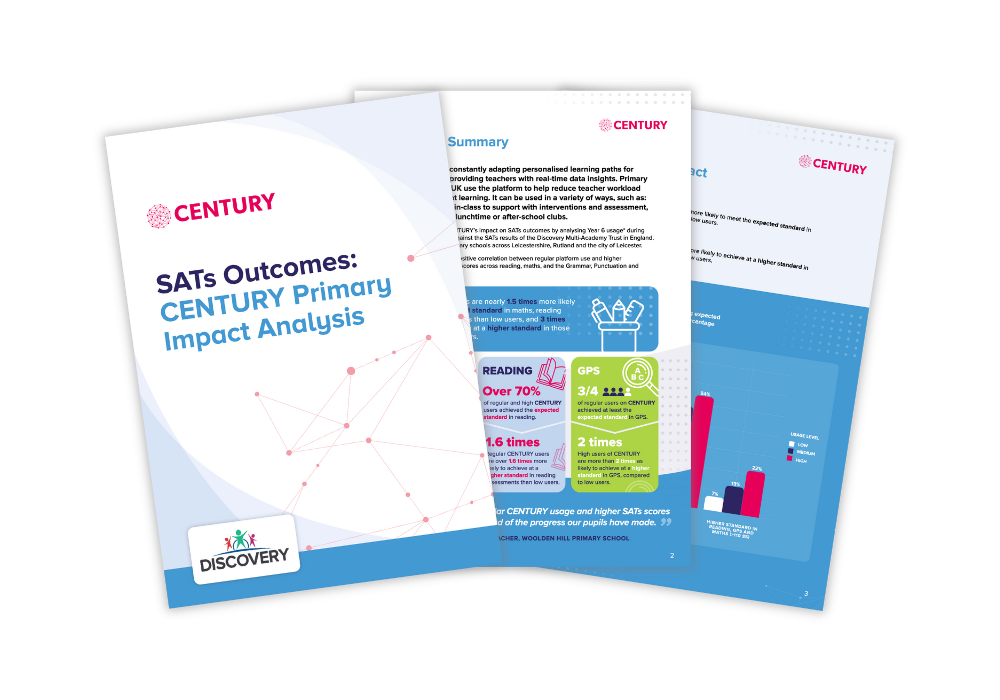How Reach British School successfully embedded CENTURY
Estimated reading time: 4 minutes

Reach British School, part of International Schools Partnership, a leading international schools provider, is one of the top schools in Abu Dhabi. Catering for children from ages 3 to 18, Reach offers an affordable British education through the National Curriculum for England; its academic and cultural rigour challenges students to excel in both their studies and personal growth. We spoke to principal Craig Halsall about how CENTURY has been successfully implemented in the school.
What are the different usage models of CENTURY at your school?
Firstly, we use it in a school as an integrated part of lessons and we’re seeing it starting to grow. We’re also looking to use it more for cover lessons, because it’s pre-loaded with high-quality learning content so we can ensure there’s no drop in the effectiveness of learning compared to a traditional cover lesson.
We don’t have a one-stop strategy for everybody because then it becomes a top-down model. And we just don’t believe that that creates buy-in. Instead we encourage teachers to use it and provide guidance. We’ve created a short and targeted brochure for teachers with our guarantees for the use of CENTURY (see below for more detail), a sweet spot between top-down and bottom-up approach. All team meetings have CENTURY AI as an agenda item each week to discuss how CENTURY’s data is informing curriculum planning and targeted interventions.
Here are our guarantees to ourselves, holding ourselves to account on how we are using CENTURY:
Learning. All students will use CENTURY AI in lessons every week, not every day, in English, maths and science to embed new knowledge and consolidate learning.
Targeted support. CENTURY AI is used as the first and preferred method for differentiation and targeted intervention.
Assessment. CENTURY AI is used as one key form of formative and/or summative assessment.
Homework. All students will use CENTURY AI as an integral part of homework.
Cover. CENTURY AI will be used for some or all maths, English and science cover lessons.
The rest of the brochure goes on to essentially give a range of guidance and advice.
How did the teachers receive CENTURY?
We’ve seen the largest uptake in primary, where teachers use it as an integrated part of the curriculum. In secondary, the mathematics department has fully embraced it, it’s now fully embedded both as a classroom and homework component. The staff have certainly enjoyed the ability to assess student understanding using diagnostics and use that to individualise the learning through teacher-assigned work as well as the AI learning pathway. That has provided a very good example for English and science to follow suit, which is what they are doing.
And what do the students think?
So far the feedback has been that it’s very stimulating and that the students enjoy learning on CENTURY. I think the best evidence of that is when we had a distance learning day recently due to poor weather, we used CENTURY as our main learning platform for the day and saw a really good uptake compared to some other work that we set for students.
Overall we’ve seen over 60% of students using their learning pathway independently, which we think at this stage of implementation is very good. And the data is also showing us that students are happy to come back to the tool and to continue practising what has been assigned by the teachers. So they’re not just using it once, but returning to use it again. And we think that’s a very healthy place to be right now.
With distance learning, I think CENTURY has had a very profound impact on a significant minority of teachers in terms of how it can improve their efficiency and effectiveness. But this has to come bottom up, because if it’s a top-down directive, it may be received as something we must comply with. And we don’t see it as a compliance issue, but as a wellbeing issue. The time saved by CENTURY gives teachers an opportunity to focus on tasks they normally lack the time to do. So we end up with a win-win situation.
How are you measuring CENTURY’s success now that you’re up and running with the full subscription?
Our plan currently is to measure the progress tests in English, maths and science through GL and CAT 4 results, as well as using our internal data. I think we’re putting quite a weighting on CAT 4, because we know it’s a cognitive ability assessment which won’t change easily in the short term, it’s something that takes time to improve.
We think that if CENTURY will have the impact we’re hoping for we will see the stanines of our students increase. In anticipation of that we’ve changed our assessment and reporting policy so it reflects how we’re going to be measuring the impact and reporting it to parents. And what it boils down to is if a student remains in their current stanine at the end of the year, they’ve made progress in line with expectations. If they progressed above a stanine, they’ve progressed above expectations, and if they dropped a stanine, they’ve gone down in their learning. And then what we are going to do is measure the number of students and which students increased their rate of progress and map it against CENTURY usage. What I expect to see is a positive correlation between the two sets of data. If we do, then obviously you would expect that CENTURY will be pushed even harder in 2024.
Find out more about how you can successfully embed CENTURY in your school here. Book a demo here.
CENTURY in the news
View all News
-

Blog
10th July 2025
The Science Behind CENTURY
In this blog post, Tom Thacker, Chief Education Officer at CENTURY, refers to Prof. Dr. Carl Hendrick's recently published guide into the science behind learning. Tom summarises the science behind learning and explains how and where this has been applied…
Read more
-

Blog
10th July 2025
CENTURY Tech report reveals significant positive impact of AI-powered learning on…
CENTURY Tech, the award-winning AI-powered teaching and learning platform, today announced the publication of its latest impact analysis report, demonstrating a strong positive correlation between regular use of the CENTURY platform and higher Key Stage 2 SATs results.
Read more